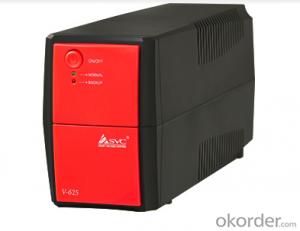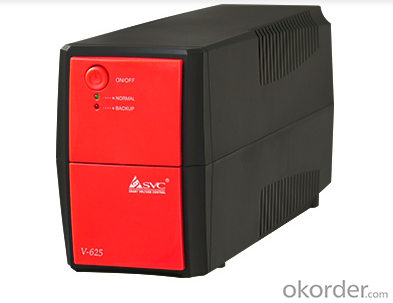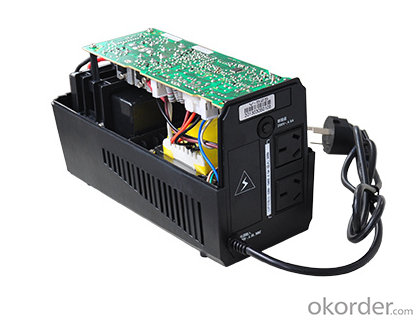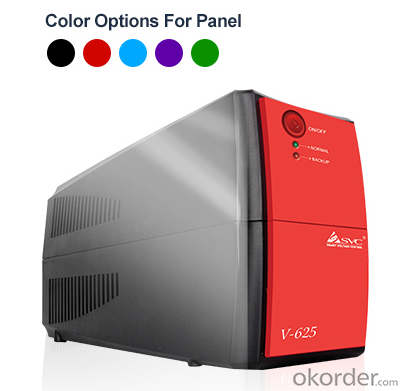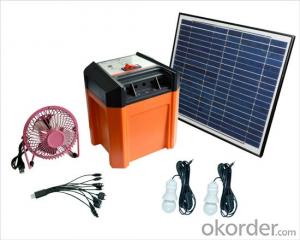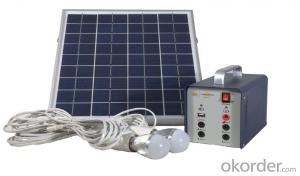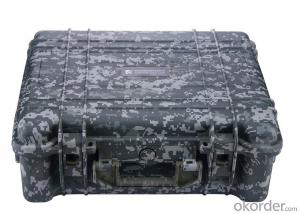Distributed Solar Energy Systems UPS Uninterrupted Power /12V Portable Electrical DC to AC UPS Uninterrupted Power Supply
- Loading Port:
- China main port
- Payment Terms:
- TT OR LC
- Min Order Qty:
- 20 carton
- Supply Capability:
- 10000 carton/month
OKorder Service Pledge
Quality Product, Order Online Tracking, Timely Delivery
OKorder Financial Service
Credit Rating, Credit Services, Credit Purchasing
You Might Also Like
12V Portable Electrical DC To AC UPS Uninterrupted Power Supply
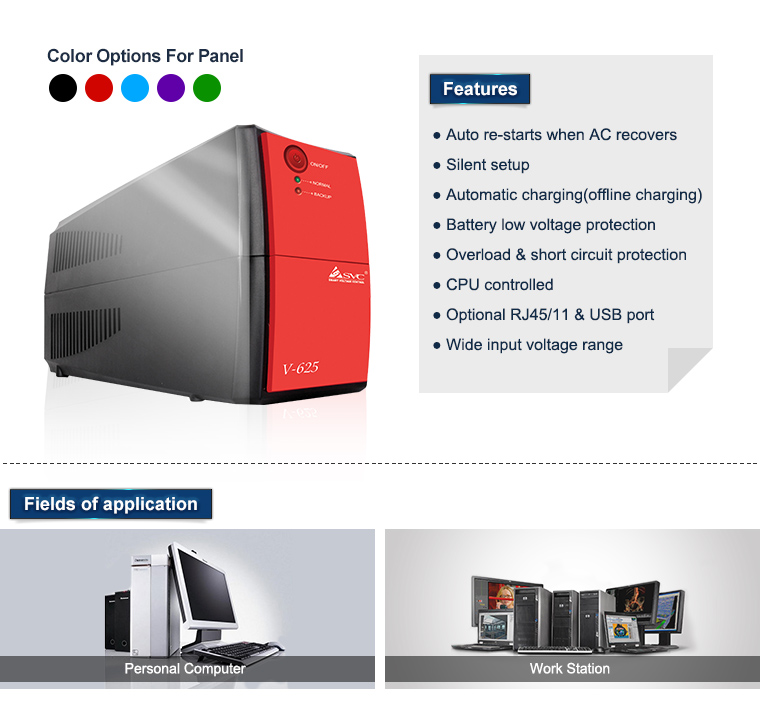

| Model | V-525 | V-625 |
| Capacity | 500va/300w | 600va/360w |
| INPUT | ||
| Input voltage | 110/120VAC or 220/230/240VAC | |
| Input voltage range | 90~132VAC / 175~265VAC | 85~150VAC / 145~290VAC |
| Frequency range | 60/50HZ/(Auto sensing) | |
| OUTPUT | ||
| Output voltage | 110/120VAC or 220/230/240VAC | |
| Output voltage range | 90~132VAC / 175~265VAC | 102~132VAC /200~255VAC |
| Output frequency | 60±0.5Hz or 50±0.5Hz(Batt. Mode) | |
| Output wave form | PWM(Batt. Mode) | |
| Transfer time | Typical 2-6ms, 10ms MAX / 2-6ms, 10ms | |
| BATTERY | ||
| QTY.&capacity of battery | 12V/4AH×1pc | 12V/7AH×1pc |
| Charging period | 4-6 hours recover to 90% capacity | |
| PROTECTION | ||
| Full protection | low voltage & overload & short circuit protection | |
| PHYSITAL | ||
| (kg) / Net weight (kg) | 4.5 | 5 |
| (mm) / Unit dimention (mm) | 255*98*140 | 300*95*140 |
| ENVIRONMENT | ||
| Environment of performance | Temperature 0°C~40°C, Humidity 20%~90% | |
| Noise level | Less than 40 dB | |
| MANAGEMENT | ||
| LCD or LED, RJ45/11 & USB | Optional | |

Feature:
Auto re-starts when AC recovers
Slience setup
Battery low voltage protection
Overload & short circuit protection
CPU control
Optional RJ45/11 & USB port
Wide input voltage range
Field of application
PC, Work stating
Small communication equipment
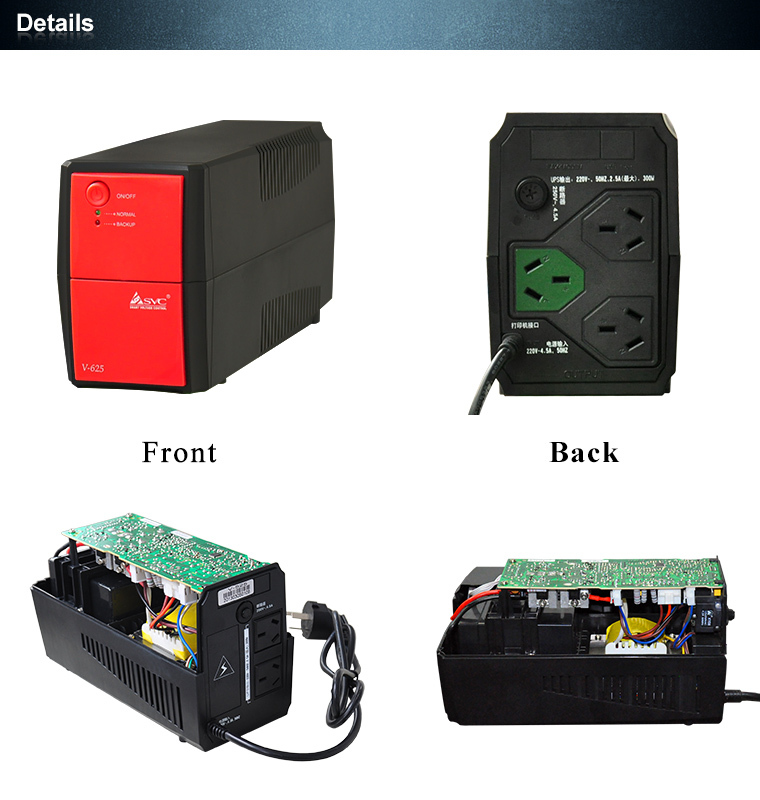
- Q: Can solar energy systems be used for powering off-grid eco-sanctuaries?
- Yes, solar energy systems can definitely be used for powering off-grid eco-sanctuaries. In fact, they are an ideal solution for such locations as they provide a sustainable and renewable energy source. Solar panels can generate electricity during the day, and excess energy can be stored in batteries for use at night or during cloudy periods. This not only reduces reliance on traditional power sources but also helps to minimize the environmental impact of these sanctuaries by reducing carbon emissions.
- Q: How do solar energy systems impact the electricity distribution infrastructure?
- Solar energy systems can have a significant impact on the electricity distribution infrastructure by reducing the demand for traditional power sources and alleviating stress on the grid. As more solar panels are installed, they generate electricity locally, reducing the need for long-distance transmission and distribution lines. This decentralization of power generation helps to increase grid resilience and stability. However, it also poses challenges in terms of grid management and balancing supply and demand. Overall, solar energy systems contribute to a more sustainable and reliable electricity distribution infrastructure.
- Q: Are there any safety concerns associated with solar energy systems?
- Yes, there are some safety concerns associated with solar energy systems. While solar panels are generally safe, there is a risk of electric shock if proper precautions are not taken during installation or maintenance. Additionally, the chemicals used in the manufacturing of solar panels, such as lead and cadmium, can be hazardous if not handled and disposed of properly. Fire hazards are another concern, as solar panels can generate heat and potentially cause fires if damaged or installed incorrectly. However, with proper installation, regular maintenance, and adherence to safety guidelines, these risks can be minimized, making solar energy systems a safe and viable option for renewable energy.
- Q: Can solar energy systems be used in areas with extreme temperature fluctuations?
- Yes, solar energy systems can be used in areas with extreme temperature fluctuations. While extreme temperatures can affect the efficiency of solar panels to some extent, modern solar technology is designed to withstand a wide range of temperatures. Additionally, proper installation and maintenance can help mitigate any potential issues caused by temperature fluctuations.
- Q: Can solar energy systems be used in areas with frequent power outages?
- Yes, solar energy systems can be used in areas with frequent power outages. Solar panels generate electricity from sunlight, which means they can operate independently of the grid. By using batteries to store excess energy, solar systems can provide power during nighttime or when the grid is down. This makes them a reliable solution for areas with unreliable or frequent power outages.
- Q: Can solar energy systems be used in areas prone to hurricanes or typhoons?
- Yes, solar energy systems can be used in areas prone to hurricanes or typhoons. While it is true that severe weather events like hurricanes and typhoons can pose a risk to solar panels, modern solar energy systems are designed to withstand such conditions. Solar panels are typically built to withstand high winds and hail, and they are tested and certified to meet certain wind resistance standards. The panels are securely mounted and anchored to roofs or the ground to prevent them from being lifted or blown away during strong winds. Additionally, manufacturers often conduct tests to ensure that their panels can withstand extreme conditions, including those experienced during hurricanes or typhoons. In areas prone to hurricanes or typhoons, it is also common to have building codes and regulations that require solar installations to meet specific wind load requirements. These requirements ensure that the solar energy systems can withstand the strong winds associated with these storms. Furthermore, inverters and other components of solar energy systems are often installed in protected areas, such as basements or garages, to minimize the risk of damage from flooding or flying debris. Stringent installation practices, including reinforced mounting systems and proper grounding, can further enhance the durability and resilience of solar energy systems in hurricane or typhoon-prone areas. It is important to note that while solar energy systems can withstand severe weather events to a certain extent, there is always a risk of damage during extremely powerful hurricanes or typhoons. However, this risk is not unique to solar energy systems and applies to other infrastructure as well. Proper design, installation, and adherence to local building codes can help minimize this risk and ensure the safe and reliable operation of solar energy systems in hurricane or typhoon-prone areas.
- Q: What is the role of disconnect switches in a solar energy system?
- Disconnect switches play a crucial role in a solar energy system by providing a means to safely isolate the system from the grid or other power sources. These switches act as a safeguard during maintenance, repairs, or emergencies, allowing for the complete disconnection of the solar panels or inverters from the electrical grid. One of the primary functions of disconnect switches is to protect both the system and the individuals working on it. They prevent the flow of electricity from the solar panels to the grid, ensuring that no power is being generated or transferred while maintenance or repairs are being carried out. This helps to minimize the risk of electric shocks or accidents. Disconnect switches also serve as a means of complying with safety regulations and codes. They allow for easy and quick disconnection of the solar energy system, which is often required during inspections or in case of emergencies such as fires or natural disasters. By isolating the system, disconnect switches help prevent any potential damage to the system or the grid. Moreover, disconnect switches enable the efficient monitoring and control of the solar energy system. They provide a convenient way to shut down the system when necessary, allowing for troubleshooting or routine checks. By disconnecting the solar panels, inverters, or battery storage systems, these switches help optimize the efficiency and performance of the overall system. In summary, the role of disconnect switches in a solar energy system is to ensure the safety of individuals working on the system, comply with safety regulations, protect the system and the grid from potential damage, and facilitate efficient monitoring and control. These switches are an essential component that allows for the safe and effective operation of solar energy systems.
- Q: Can solar energy systems be used in areas with limited access to maintenance services?
- Yes, solar energy systems can be used in areas with limited access to maintenance services. Solar panels are relatively low-maintenance and durable, requiring minimal upkeep. They do not have moving parts that can wear out, and regular cleaning is often the only maintenance required. Additionally, advancements in technology have made solar systems more reliable and efficient, reducing the need for frequent maintenance.
- Q: Can solar energy systems be used in areas with high humidity?
- Yes, solar energy systems can be used in areas with high humidity. While high humidity can affect the efficiency of solar panels to some extent, modern solar technology is designed to withstand various weather conditions, including high humidity. Additionally, regular maintenance and cleaning of the panels can help minimize any negative impact on their performance.
- Q: How much energy can a solar energy system produce?
- The amount of energy that can be generated by a solar energy system relies on a variety of factors, including the system's size, efficiency, location, weather conditions, and available sunlight. On average, a typical solar energy system can produce between 1 and 10 kilowatt-hours (kWh) of electricity per day for every installed kilowatt (kW) of solar panels. To illustrate, a solar energy system with a capacity of 5 kW can generate approximately 5 to 50 kWh of electricity daily, which is typically sufficient to fulfill the energy needs of an average household. However, it is important to note that this energy production can fluctuate throughout the year due to seasonal changes in sunlight availability and weather conditions. Furthermore, advancements in solar technology and enhanced efficiency of solar panels have resulted in significant improvements in energy production. By utilizing high-performance solar panels and optimized system designs, it is possible to generate even greater amounts of electricity, thereby maximizing the energy output of a solar energy system. Moreover, any surplus energy generated by a solar energy system can be stored in batteries for future use or fed back into the power grid, depending on the specific setup and local regulations. This enables further utilization and optimization of solar energy production. Ultimately, the potential energy production of a solar energy system is a dynamic and customizable aspect that can be adjusted to meet individual energy requirements and objectives. Seeking guidance from a solar energy professional can provide more precise estimates and assist in designing a system that is best suited to specific needs.
Send your message to us
Distributed Solar Energy Systems UPS Uninterrupted Power /12V Portable Electrical DC to AC UPS Uninterrupted Power Supply
- Loading Port:
- China main port
- Payment Terms:
- TT OR LC
- Min Order Qty:
- 20 carton
- Supply Capability:
- 10000 carton/month
OKorder Service Pledge
Quality Product, Order Online Tracking, Timely Delivery
OKorder Financial Service
Credit Rating, Credit Services, Credit Purchasing
Similar products
Hot products
Hot Searches
Related keywords
